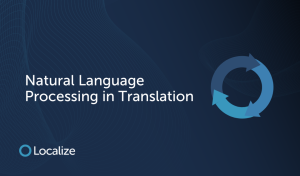It’s safe to assume that a majority of customers don’t just depend on the salesperson for recommendations. It’s in our nature to be a bit skeptical and to try out things for ourselves before we ask for any guidance. We take the time to do our own research and create a list of items that we think are suitable for our requirements. It’s only after this that we start the search process for what we want and then, from there, we progress towards the actual transaction.
That’s exactly how choosing a translation service also works. However, a lot of businesses don’t realize that. Due to the lack of information and, sometimes, hastiness, businesses end up with the wrong kind of translation service.
Defining Effective Translation
Translation is subjective. What works for your competitor may not work for you. However, the goal of translation is the same – to send out a consistent message that does not confuse the audience. That’s why, when choosing a translation provider, you need to focus on Quality, Originality, Cost, and Speed.
Originality is directly linked to the creativity aspect of things. You need to decide if you want accurately translated content or improved versions of your original content. Quality is important because you obviously do not want your local audiences to identify mistakes or worse, misunderstand the message. Think about how much you want to avoid trouble and then, see if the investment is worth it. As for cost, the key question is what is the maximum you can spend considering your final translation goals?
And finally, when looking at speed, your main question should be “what might happen when the content is still absent?”
Once you assess your needs according to these factors, you will get a clearer picture of the kind of translation that best suits your requirements.
Types of Translation
Here are a few examples of the various translation types that are available to you.
- Professional:
This is the most basic translation model. The end result here is that your source content is translated as accurately as possible without interfering with the core meaning behind the message. - Transcreation:
This is a blend of copywriting and translation. Though the primary function is to translate your source content accurately, there is a focus on enhancing the message as well. Transcreation allows you to overcome challenges related to cultural interpretations. You’re not just converting one language into another; you’re actually trying to build a connection with your new audience while still retaining your core message. Naturally, the level of complexity involved makes this an expensive option. However, if you need a creative edge, transcreation is your only option. - Machine Translation:
As technology progresses, it is becoming possible for computers to interpret and even replicate even the most subtle aspects of human communication. Machine translation relies on neural networks, statistical models, and rule-based systems employed by Artificial Intelligence to produce accurate translations. The key benefit here, however, is not accuracy but speed. So, if large volumes and costs are your greatest challenges, machine translation is your best bet. However, you’re still depending on machines and that means there is always room for error. - Machine Translation Post-Editing:
Unlike pure machine translation, this type of translation has human editors conducting a quality analysis of the translated content. The key benefits here are that you save time and money while also avoiding errors. However, you lose out on the creative edge and also, humans can only fix so much. As a result, this is best used for content that is low-impact.
Adaptive Machine Translation:
Adaptive Machine Translation uses Adaptive Machines to study linguists and editors in real time and learn from them. What is learned is then used by the Machine Translation system to create accurate translations. To put it simply, it’s the perfect collaboration between man and machine. However, the option is an expensive one and it’s still in its early stages. So, again, it’s best used for low-impact content.
Ready to go global? Sign up for a 2 week trial here and we’ll reach out to help.






